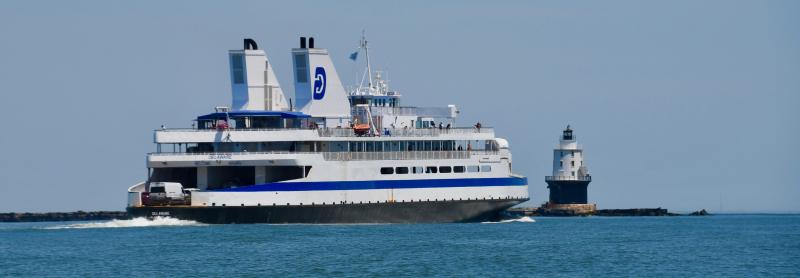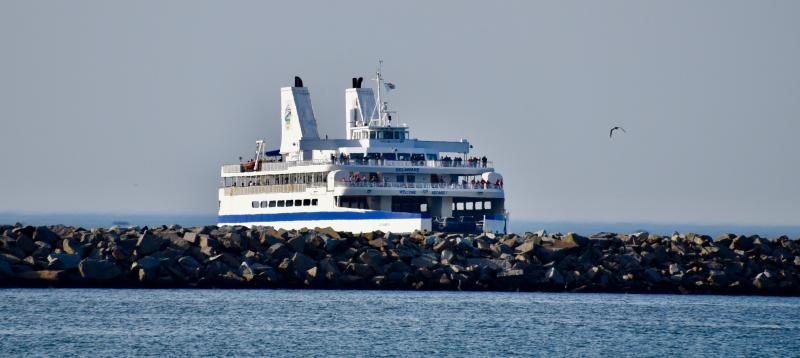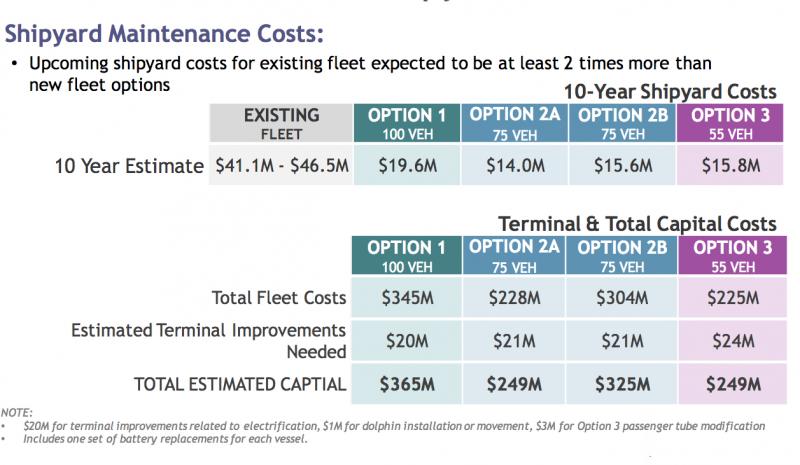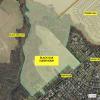There is little doubt the Delaware River and Bay Authority needs to replace its aging Cape May-Lewes Ferry fleet. The three ferries in the current lineup were built in the mid-1970s and early 1980s.
Ferry officials are developing a new master plan to determine just what that new fleet would consist of.
During an Oct. 7 virtual meeting, Heath Gehrke, director of ferry operations, said public input is a key component of the plan. “It’s critical we get this right,” he said. “We want to gain information from you, which will influence which option we choose. All of the options are better than staying with the existing ferries.”
The ferry system has been in operation between Lewes and Cape May, N.J., since 1964.
DRBA has hired the Elliott Bay Design Group, based in Seattle, Wash., to draft the plan and design the new ferries.
Team member Kristen Kissinger said the report will be completed by this winter. Design could begin as early as 2022 with construction in 2024. “That’s if all the stars align,” she said.
Options for new fleet
The options being considered include:
Option 1: Three ferries with 100-vehicle and 440-passenger capacity, which is the closest option to the existing fleet.
Option 2A: Three 75-vehicle, 330-passenger ferries.
Option 2B: Four 75-vehicle, 330-passenger ferries.
Option 3: Five 55-vehicle, 240-passenger ferries.
Kissinger said passenger capacity of all options is less than that of the existing ferries. “Currently, there is more capacity than is really needed,” she said.
The existing fleet can accommodate up to 863 riders per ferry, yet the average daily ridership rarely exceeds 400, according to the report.
Kissinger said the new ferries will offer improved crew and passenger space, modern seating and more event space.
Although some terminal modifications will be needed, Kissinger said the chosen option will need to fit in with existing infrastructure as much as possible.
Costs of a new fleet
During the virtual presentation, design team members discussed ridership and scheduling, and costs for each option. Project manager John Peterson said the new ferries will operate using diesel-hybrid propulsion, which includes use of battery power.
“As battery technology improves, we’d like to move to 100 percent electric power if possible,” Gehrke said.
The new propulsion system will reduce emissions and costs to operate the vessels.
Fleet costs, including $20 million to $24 million in terminal improvements, range from $365 million for Option 1 to $249 million for Option 3, which is the least-expensive fleet cost but requires the most terminal improvements. Option 2A would cost $249 million and Option 2B would cost $325 million.
Option 1 is the most expensive fleet to build, Peterson said.
A 100-vehicle ferry would cost $115 million, a 75-passenger ferry $76 million, and a 55-vehicle ferry $45 million.
Annual operating costs, which include labor, fuel, insurance and maintenance, range from $9.1 million for Option 1, to around $9 million for Options 2A and 2B, to $7.7 million for Option 3. Labor is by far the largest cost, Peterson said, ranging from $5.1 million for Option 1 to $3.4 million for Option 3.
Currently, ferries are staffed by a 14-member crew, which includes food and customer service workers. Smaller ferries would require fewer crew members.
Demand changes during year
Team member Martha Hart said designing a new fleet is challenging because of the large fluctuations in Cape May-Lewes Ferry ridership depending on the season. Ridership demand is high in the summer, begins to fall off in the shoulder seasons, and is low in the winter.
She said analysis has found the peak demand for ridership during the summer is between 10 a.m. and 5 p.m., and that all options can meet ridership needs for each season.
Hart said the maximum daily ridership has been 1,992 vehicles with a capacity of 2,400 riders.
She said Option 3 provides the most flexibility in scheduling, especially during the winter.
Closer look at smaller vessels
Team member John Waterhouse said one factor that needs to be explored is that smaller vessels allow for more wave motion felt by passengers.
He said ferry staff will make a visit to study the Cape Cod ferry system, which operates smaller vessels throughout the year.
“And not all new boats will be available day one, so that will present some operational challenges,” Waterhouse said.
“The beauty of the smaller vessels is they are less expensive to build and operate. When demand falls, they would also be less expensive to operate in the winter,” Gehrke said.
He added that all options are still on the table as the master plan develops with public input.
Gehrke said the actual construction schedule will depend on how much funding is available.
The presentations can be viewed at cmlf.com/marine-master-plan. Comments can be submitted by emailing MarineMasterPlan@drba.net, calling 609-889-7280 or mailing to Heath Gerhke, PO Box 827, North Cape May, NJ 08204.
BY THE NUMBERS
Vehicles comprise 80 percent of ferry traffic.
Since 1964, the ferry has carried more than 14 million vehicles and more than 43 million passengers on the 17-mile, 80-minute ride.














































